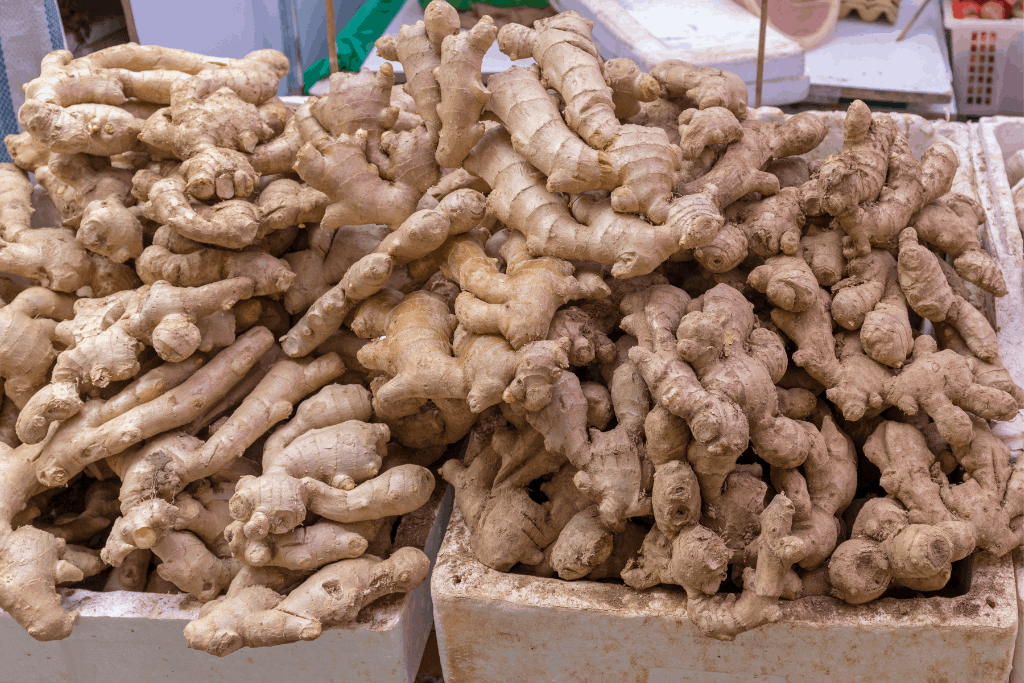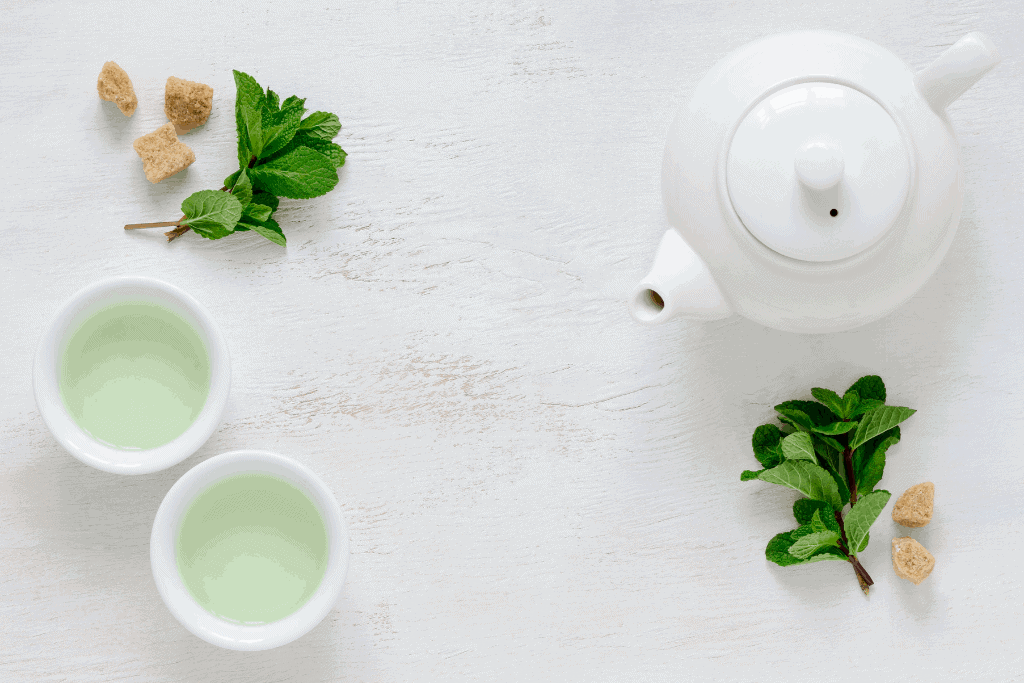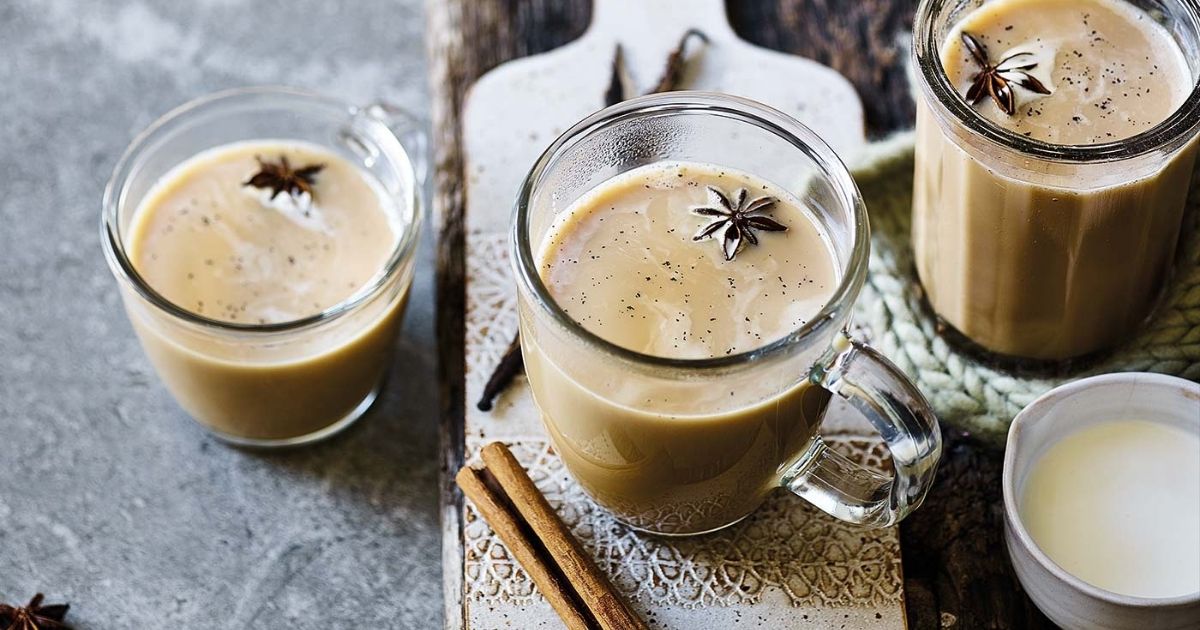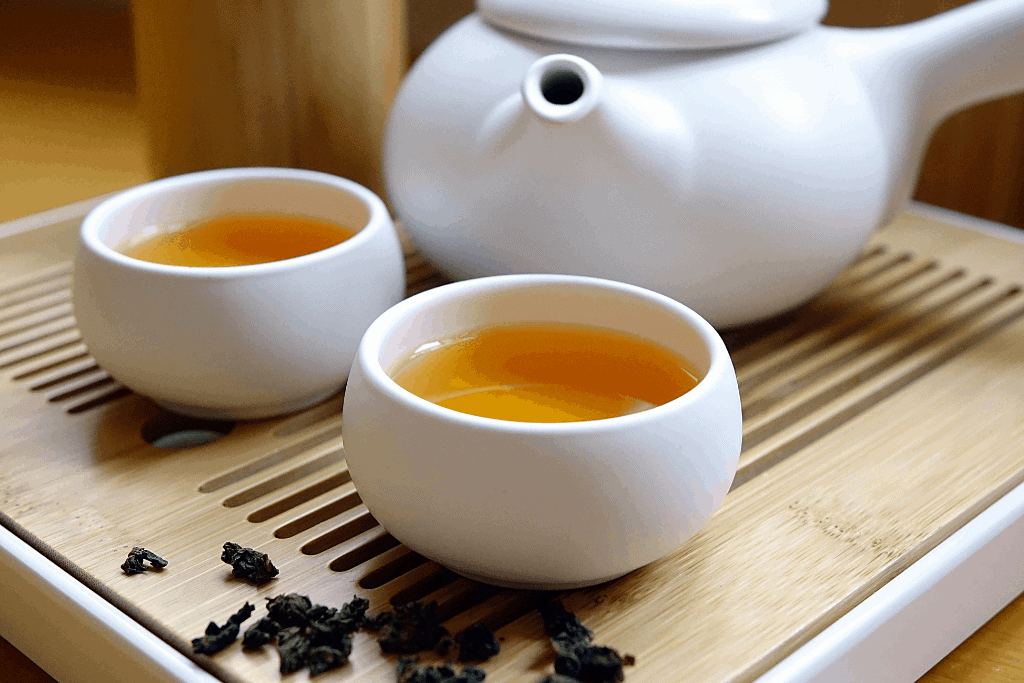The history of ginger tea goes all the way back more than 5,000 years when Indians and ancient Chinese would use this root to help cure many diseases. At the time they considered this root tonic and had religious significance among Austronesians.
The story has it that the ginger root was used by the Austronesian people for healing and for asking the spirits for protection. This ginger root was carried with them in their voyages during this historic period of the Austronesian expansion and was used for the blessing of their vessels for a safe journey.
Because of the medicinal properties that this spice was now known for, by the thirteenth and fourteenth centuries, the value for a pound of ginger was equivalent to the cost of a small cow or sheep.
Origins
Ginger originated from Island Southeast Asia. The most ancient evidence of its domestication is from the Austronesian people where there were several species of ginger, including turmeric, white turmeric and also bitter ginger.
The ginger was then carried by Austronesian voyagers into places like Madagascar and Comoros. Then from India, the ginger was carried by traders along with numerous other spices into the Middle East, the Mediterranean, and other civilizations over the years and is now commonly used all over the world.
India now holds the seventh position is ginger export worldwide, this is because places like the southwest and Northeast of India are very suitable for growing ginger due to their hot and humid climate.
Then in 2016, the global production of ginger was 3.3 million tonnes, which of course was led by India.
The Plant
The Ginger root (rhizome) is from the (Zingiber Officinalis) flowering plant and is grown in countries like China, Indonesia, Nepal, Thailand, Nigeria, and of course India which is now the leading country in the production of ginger worldwide.
Ginger is a tropical plant and can be very hard to grow in certain countries that are less warm and humid. The ginger plant thrives in hot and humid conditions and the roots can grow up to, 4 to 6 inches long, at this point, the ginger will be ready to harvest.
The ginger plant only grows to about two to three feet in height that’s 60-90cm. The Ginger plant usually takes eight to ten months to fully grow and when it’s ready to harvest, the plant is then dug up and the ginger root (rhizome) is removed.
The root is then soaked overnight and rubbed well for cleaning, ready to be transported to its final destination.
But with dry ginger, the outer skin is scraped off when harvest with a wooden knife that must be done by hand as it is a delicate process, after this, the ginger is then converted into a dry powder.
Why It’s Used In Tea
Ginger Tea is well known for its health benefits, such as improving stomach performance and digestion among other things, and by drinking ginger in tea form, with its anti-inflammatory gingerols and shaogals in the ginger root this can help relieve a sore throat quickly and cure the flu if you catch it early enough.
It’s very easy to make and can be made by simply boiling fresh ginger slices in water. Ginger can also be a great winter tea when that cold chill is in the air your better off drinking a piping hot cup of spicy ginger tea to warm the body.
However! Not everyone enjoys the spicy bitterness taste you get from ginger tea and of course these days you can buy ginger tea with different flavors, and ingredients, such as honey or lemon to help make the tea more enjoyable.
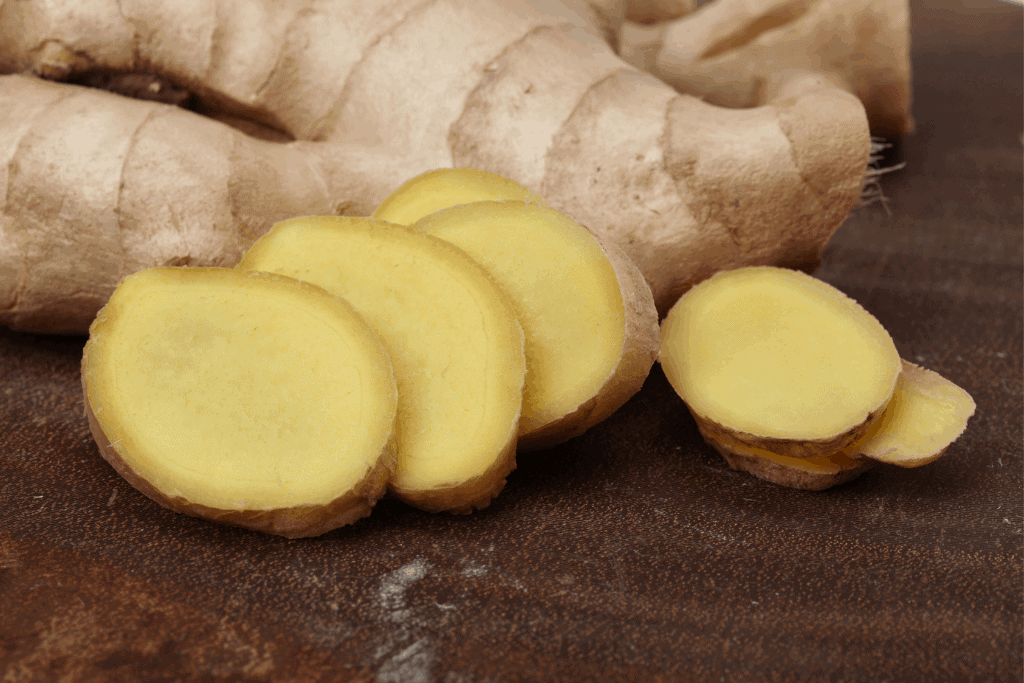
Remedies
So as we know throughout the history of ginger tea the root was used by the Austronesians for religious significance, and for its healing powers, but what about other remedies that ginger tea was known for? Well, there’s a number of different remedies that ginger can also help with for example…
- Relieve stress
- Relieve nausea
- Strengthen immunity
- Reduce inflammation
- Improve blood circulation
- Fight respiratory problems
- Relieve menstrual discomfort
- Improve stomach performance
- Improve stomach performance
Scientists have also linked some of the compounds in ginger with improvements in insulin and metabolism and because of the cell-protecting properties of ginger this can lower the long-term risk of certain cancers and diabetes.
Related Article:
History Of The Term Ginger
The history of ginger and it’s tea goes all the way back 5,000 years and as we know the word ginger in this context is related to the red ginger plant that’s used today in drinking teas, cooking and medicine all around the world ”BUT” where did the term ”Ginger” come from?
Now according to the website Wikipedia in the section Etymology the origin of the word, ”Ginger” has evolved over time and was actually pronounced slightly different back in the mid-14th century. This is what they say…
The English origin of the word, “ginger”, is from the mid-14th century, from Old English gingifer, from Medieval Latin gingiber, from Greek zingiberis, from Prakrit (Middle Indic) singabera, from Sanskrit srngaveram. The Sanskrit word is thought to come from a Dravidian word that also produced the Malayalam name inchiver (from inchi “root”) an alternative explanation is that the Sanskrit word comes from srngam “horn” and vera– “body” (describing the shape of its root).
Wikipedia.com
There were many different terms to ginger from all over the world, but of course, theses days the word ”Ginger” is not just used for the spicy red root and again has now evolved over time.
Is Ginger A Spice Or Herb
Now the ginger plant can be classed as a spice or a herb and this is because the leaves of the ginger plant are actually by definition an herb and with the root of the plant being a spice you can see why some people get confused.
When spices are harvested this is usually taken from the bark or roots of plants. Yet with the herbs, they are harvested from the leaves of the plant giving you that lightweight herb.
But that being said considering the ginger we know and use is actually the root of the plant it’s safe to say that ginger is a spice unless, you’re using the leaves for the plant, which is the only way ginger becomes a herb.
Conclusion
So as you know now the history of ginger and its tea originated in Southeast Asia and as time went on traveled to other parts of the world and is now used in cooking, baking, iced tea, hot tea, and medicines, pretty much anything you can think of ginger can be added.
Ginger tea itself makes a great beverage, it adds nutrients to the body, and as mentioned before is ideal as a winter tea to help warm the body and fight against the flu or a sore throat.
If your not drinking ginger tea already you really should try it using sliced fresh ginger in hot water.
If you find that the spice is too strong, remember you can add things like honey or lemon maybe a sweetener to give you a sweet taste in your tea. There so many things you can do with ginger it really is a fantastic spice and can make a fine addition to anyone’s diet.

